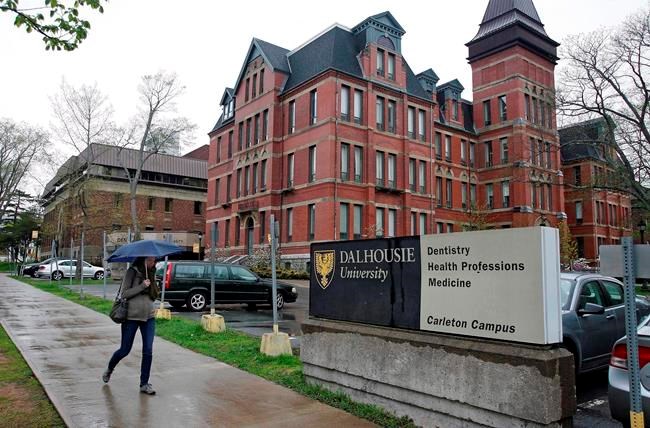HALIFAX — When Jacob Ritchie and his wife Krista first had kids, setting money aside for their children’s post-secondary education seemed like a luxury they couldn’t afford.
The engineer and professor were still early in their careers — and paying off their own student loans.
“We were at the point where every dollar mattered,” he says. “We had to pay for daycare and other bills.”
But when they bought a house and got to know a financial planner, the couple opened Registered Education Savings Plans, or RESPs, for their three children.
“We developed a relationship with someone at the bank and trusted them,” Ritchie says. “But that only happened when we had means and money.”
A new poll says that while most Canadians are aware of RESPs, less than half are currently using the investment vehicle.
The survey by The Canada Life Assurance Co. also found that only 17 per cent of respondents said they were knowledgeable about the benefits and contribution limits of the savings tool.
That’s despite education planning being cited as a top priority for Canadians with kids under 18 — second only to retirement.
With the rising cost of post-secondary education, Paul Orlander with Canada Life said an RESP is an effective way to save for a child’s education while helping them avoid excessive student debt.
“The government will match 20 per cent of your RESP contribution every year up to $500,” said Orlander, executive vice-president, individual customer, with Canada Life.
Earnings on contributions grow tax-free while in the RESP.
“That's sort of free money and that doesn't appear too often overall in our lives.”
The survey found the average total contribution to an RESP is about $22,800, with a median monthly contribution of $210.
Yet some parents may not be contributing to an RESP because they simply can’t afford it, a recent Statistics Canada study suggested.
It found that RESP participation rates tend to rise substantially with family income. The research indicated that differences in wealth remain the single most important factor behind the gap in RESP participation by family income — even after accounting for differences in parental education and literacy, numeracy and financial literacy.
“People are worried about paying for housing and child care and putting food on the table now,” said Erika Shaker, director of the national office of the Canadian Centre for Policy Alternatives.
“They may not have extra money to set aside for something that’s 10 or 15 years down the road.”
The big issue is the soaring cost of post-secondary education and the complex web of student financial aid in each province that shifts with nearly each election cycle, she said.
A Statistics Canada report released last week said Canadian students enrolled full-time in undergraduate programs will pay an average of $6,693 in tuition for the upcoming 2021-2022 academic year, up 1.7 per cent from the previous year.
Knowledge First Financial, which specializes in education savings, said that by 2030, the average cost of a four-year post-secondary degree will be about $111,698 with residence and $55,548 without residence.
“Telling people to save more and dangling a (government contribution) as if the problem is a lack of motivation rather than a simple lack of funds will not address the underlying problem, which is cost,” Shaker said.
Dalhousie University economics professor Lars Osberg said the problem is the privatization of the financial burden of university education.
He said some graduates delay buying a home, starting a family, or even contributing to a savings vehicle like an RESP for their child because of high student loan debt.
“We’ve shifted away from a social responsibility for post-secondary education to a privatized responsibility,” Osberg said. “It downloads a lot of pressure onto individual parents and students.”
In addition to parents struggling to pay off their own student loans, he says middle-class incomes have largely stagnated over the last few decades leaving little money to put into savings.
Still, Orlander with Canada Life said opening an RESP early is valuable, even if parents can’t afford to save much.
“Establishing the savings habit toward the goal is half the battle,” he said. “Setting up a routine contribution is a critical first step, because it allows you to consider increasing it down the road.”
Orlander added: “The ability of even smaller amounts to build over time through compounding makes a tremendous impact at the end of the day. Every little bit helps.”
The one potential drawback to an RESP is it can be complicated for busy parents, he said.
“Working with an adviser and getting some advice can be really helpful,” Orlander said. “The RESP is a terrific product that Canadians have an opportunity to take advantage of.”
About Registered Education Savings Plans:
- An RESP is a savings plan for a child’s post-secondary education
- Earnings on contributions grow tax-free while in the RESP
- When the funds are withdrawn for education, earnings are taxed in the student’s name, often resulting in little or no tax
- The government matches 20 per cent on the first $2,500 contributed annually to an RESP, to a maximum of $500 per year
- The money can be used for expenses related to post-secondary education including tuition, books, accommodations, meals, a laptop and transportation to school
This report by The Canadian Press was first published Sept. 16, 2021.
Brett Bundale, The Canadian Press

